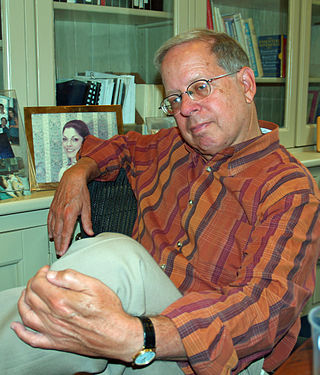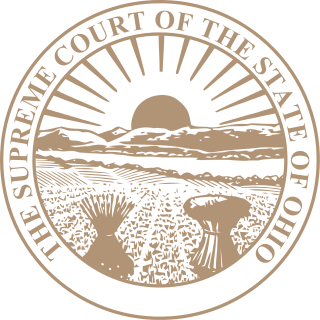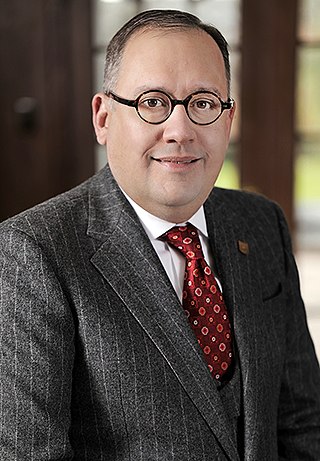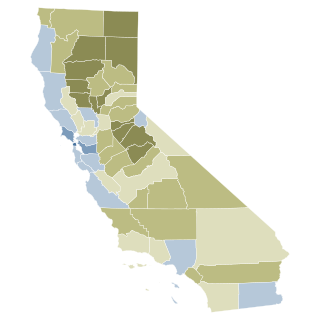
The United States Department of Education is a Cabinet-level department of the United States government. It began operating on May 4, 1980, having been created after the Department of Health, Education, and Welfare was split into the Department of Education and the Department of Health and Human Services by the Department of Education Organization Act, which President Jimmy Carter signed into law on October 17, 1979.

Proposition 13 is an amendment of the Constitution of California enacted during 1978, by means of the initiative process. The initiative was approved by California voters on June 6, 1978. It was upheld as constitutional by the United States Supreme Court in the case of Nordlinger v. Hahn, 505 U.S. 1 (1992). Proposition 13 is embodied in Article XIII A of the Constitution of the State of California.

The No Child Left Behind Act of 2001 (NCLB) was a U.S. Act of Congress that reauthorized the Elementary and Secondary Education Act; it included Title I provisions applying to disadvantaged students. It supported standards-based education reform based on the premise that setting high standards and establishing measurable goals could improve individual outcomes in education. The Act required states to develop assessments in basic skills. To receive federal school funding, states had to give these assessments to all students at select grade levels.

Robert Jackson is an American politician in New York City. A member of the Democratic Party, he is the Senator for the New York State Senate's 31st district on the West Side of Manhattan. He previously served in the New York City Council from 2002 to 2013, representing the 7th district in Manhattan. He is the first Muslim New York State Senator.

Proposition 209 is a California ballot proposition which, upon approval in November 1996, amended the state constitution to prohibit state governmental institutions from considering race, sex, or ethnicity, specifically in the areas of public employment, public contracting, and public education. Modeled on the Civil Rights Act of 1964, the California Civil Rights Initiative was authored by two California academics, Glynn Custred and Tom Wood. It was the first electoral test of affirmative action policies in North America. It passed with 55% in favor to 45% opposed.

John Edward Sexton is an American legal scholar. He is the Benjamin F. Butler Professor of Law at New York University where he teaches at the law school and NYU's undergraduate colleges. Sexton served as the fifteenth president of NYU, from 2002 to 2015. During his time as president, NYU's stature rose dramatically into the ranks of the world's top universities, and it became the world's first global network university. Sexton has been called a "transformational" figure in higher education and was named by Time Magazine as one of the United States' 10 best college presidents.

Education in New York City is provided by a vast number of public and private institutions. New York City has the largest educational system of any city in the world. The city’s educational infrastructure spans primary education, secondary education, higher education, and research. New York City is home to some of the most important libraries, universities, and research centers in the world. In 2006, New York had the most post-graduate life sciences degrees awarded annually in the United States, 40,000 licensed physicians, and 127 Nobel laureates with roots in local institutions. The city receives the second-highest amount of annual funding from the National Institutes of Health among all U.S. cities. It also struggles with disparity in its public school system, with some of the best-performing public schools in the United States as well as some of the worst-performing. Under Mayor Michael Bloomberg, the city embarked on a major school reform effort.

Michael A. Rebell is the executive director of the Center for Educational Equity at Teachers College, Columbia University. He is an experienced litigator in the field of education law, and he is also professor of law and educational practice at Teachers College. He has also taught at Harvard, Yale and Columbia Law Schools.

The 2007 Texas constitutional amendment election took place 6 November 2007.

James H. Donovan was an American businessman and politician from New York.

DeRolph v. State is a landmark case in Ohio constitutional law in which the Supreme Court of Ohio ruled that the state's method for funding public education was unconstitutional. On March 24, 1997, the Supreme Court of Ohio ruled in a 4–3 decision that the state funding system "fails to provide for a thorough and efficient system of common schools," as required by the Ohio Constitution, and directed the state to find a remedy. The court would look at the case several times over the next 12 years before it relinquished jurisdiction, but the underlying problems with the school funding system remain to this day.
The Oklahoma State Budget for Fiscal Year 2006, was a spending request by Governor Brad Henry to fund government operations for July 1, 2005–June 30, 2006. Governor Henry and legislative leader approved the budget in May 2005.
The Oklahoma State Budget for Fiscal Year 2007, was a spending request by Governor Brad Henry to fund government operations for July 1, 2006–June 30, 2007. Governor Henry and legislative leader approved the budget in May 2006.
Leland George DeGrasse was a judge in New York, New York, who served for seven years as an associate justice of the New York Appellate Division of the Supreme Court, First Judicial Department.
The Oklahoma State Budget for Fiscal Year 2008, was a spending request by Governor Brad Henry to fund government operations for July 1, 2007–June 30, 2008. Governor Henry and legislative leader approved the budget in May 2007.

Andrew D. Martin is chancellor and professor of political science and law at Washington University in St. Louis.
Educational Credit Management Corporation (ECMC) is a United States nonprofit corporation based in Minnesota. Since 1994, ECMC has operated in the areas of student loan bankruptcy management and loan collection. ECMC is one of a number of guaranty agencies that oversee student loans for the United States Department of Education. As a guarantor working on behalf of the U.S. Department of Education, ECMC charges fees to debtors and earns commissions from taxpayers by collecting on defaulted student loans pursuant to the Higher Education Act. In return, the U.S. government has retrieved billions of dollars from student loan debtors. From 1994 to 2015, according to ECMC, they returned $4.3 billion to the U.S. Treasury.

Proposition 16 is a California ballot proposition that appeared on the November 3, 2020, general election ballot, asking California voters to amend the Constitution of California to repeal Proposition 209 (1996). Proposition 209 amended the state constitution to prohibit government institutions from considering race, sex, or ethnicity, specifically in the areas of public employment, public contracting, and public education. Therefore, Proposition 209 banned the use of race- and gender-based affirmative action in California's public sector.

California Proposition 15 was a failed citizen-initiated proposition on the November 3, 2020, ballot. It would have provided $6.5 billion to $11.5 billion in new funding for public schools, community colleges, and local government services by creating a "split roll" system that increased taxes on large commercial properties by assessing them at market value, without changing property taxes for small business owners or residential properties for homeowners or renters. The measure failed by a small margin of about four percentage points.












